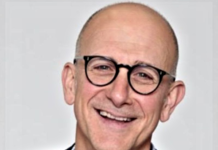
With May being Mental Health Awareness Month, Radio Ink wants to shine a spotlight on the importance of mental health. While we have discussed ways to take care of ourselves and our employees and coworkers in radio, stations also have a duty to act in the public interest. For those on the fence about discussing difficult topics on air, you might be missing out on a sizable portion of listeners. Radio Ink discussed the unique market for mental health with Audacy’s Senior Vice President of Research and Insights Idil Cakim.
Radio Ink: Radio has been considered a companion medium since its inception. With so much more competition for attention these days, do you feel that still holds true, or are listeners slowing down or shifting away?
Idil Cakim: I don’t think it’s slowing down at all. In fact, we’ve done a series of studies on audio rituals that showed that radio and other forms of audio, streaming and podcasts, have moved to the front lines of our lives. People, especially younger audiences, are bringing audio into their daily rituals.
They’re organizing their day around their audio. 74% of Americans said they make sure they have time for audio in their lives. 40% said they organize their daily schedule around audio. That’s a big shift from background to the foreground, from thinking of radio or other forms of audio just as companions. So I think it’s a guiding force now, rather than something just in the background.
Radio Ink: What’s been the timeframe for that shift? I know it’s been a very stressful few years for everyone, to say the absolute least. How has COVID affected or evolved radio’s companion status?
Idil Cakim: The COVID era has definitely increased time with audio. We’ve seen this in our surveys. The Bureau of Statistics released numbers as to how we changed and what we spend time on and it was incredible to see that time spent with audio actually increased. That’s due to also the fact that it is comforting, it is trustworthy. We go to audio for news, entertainment, advice, and for also just relaxation, too.
Now that it’s available on different platforms, it’s the one medium that will travel with you, whatever you do, wherever you go. So that pervasiveness comes with audio. And the fact that people do spend more time with audio than other media, I think was very interesting.
During COVID, we did a study with Nielsen in three big markets. People were hearing the same news from TV and radio, but they said TV news made them feel stressed and radio news comforted them and assured them. We chalk that up to the connection they had with their radio hosts.
Radio Ink: May is Mental Health Awareness Month. Fortunately, we’re now in a place as a society where we’re kind of taking away the taboos of talking openly about mental health. That being said, it can still be very tough to talk about. How important is audio to covering these topics?
Idil Cakim: As a researcher, it was very interesting to see how open people were to have these discussions and to hear about these types of topics from their podcasts or radio hosts. We had done a study just looking into how Audacy was resonating with audiences. In it, we asked some questions about our “I’m Listening” program and about mental health from audio sources.
Let me give you the statistics on the percentage of people who would like to hear about mental health programming on a weekly basis. It’s not taboo anymore. It’s something people want to hear about and audio seems to be the perfect medium to bring it to them.
42% of listeners in the US said they’re very likely to listen to a radio program that discusses mental health issues. That number was even higher among Gen Z and Millennials. Of 18 to 34-year-olds, 55% of them said they would be extremely or very likely to listen to a radio program that discusses mental health issues. It was even higher among Blacks, 60%, and very high, 51%, among Hispanics.
Then I wondered how often they want to talk about this. Among those who were at least somewhat interested in this kind of programming, 22% said they could listen to mental health-centric programming every day. And 43% said once a week. So 65% total could listen to it at least weekly. That’s a lot of frequency. But that just goes to show you how there’s a hunger and a lot of yearning for this type of content.
Radio Ink: That’s interesting that there’s such demand, it’s almost the inverse of what we now see on social media. A lot of Millennials and Gen Z have started taking mental health breaks from social media – how can audio pull those people into our communities?
Idil Cakim: That’s a survey finding that we came across as well. When we asked Gen Z and Millennial listeners how audio compared to social media, we found some things that make them insecure, like the social media filters that distort reality a little bit. A push from social media influencers makes them feel a little bit differently than the talk from their favorite podcast or radio host.
Hosts should focus on programming that tends to be more well-researched and discussion-oriented and trusted. A lot of listeners will often say that when a radio influencer or a podcast influencer recommends or endorses something, they’ve tried it, or they wouldn’t recommend it otherwise. There’s a lot of trust and intimacy. Whereas the abundance of information that’s coming at them on other platforms feels overwhelming.
It was really interesting to see 41% say that they sometimes even forget that things on social media are not always real. By comparison, audio is real, it’s trusted, and it’s offering a connection and a community. So it’s a sharp contrast in terms of how it makes people feel and what it leaves people with.





